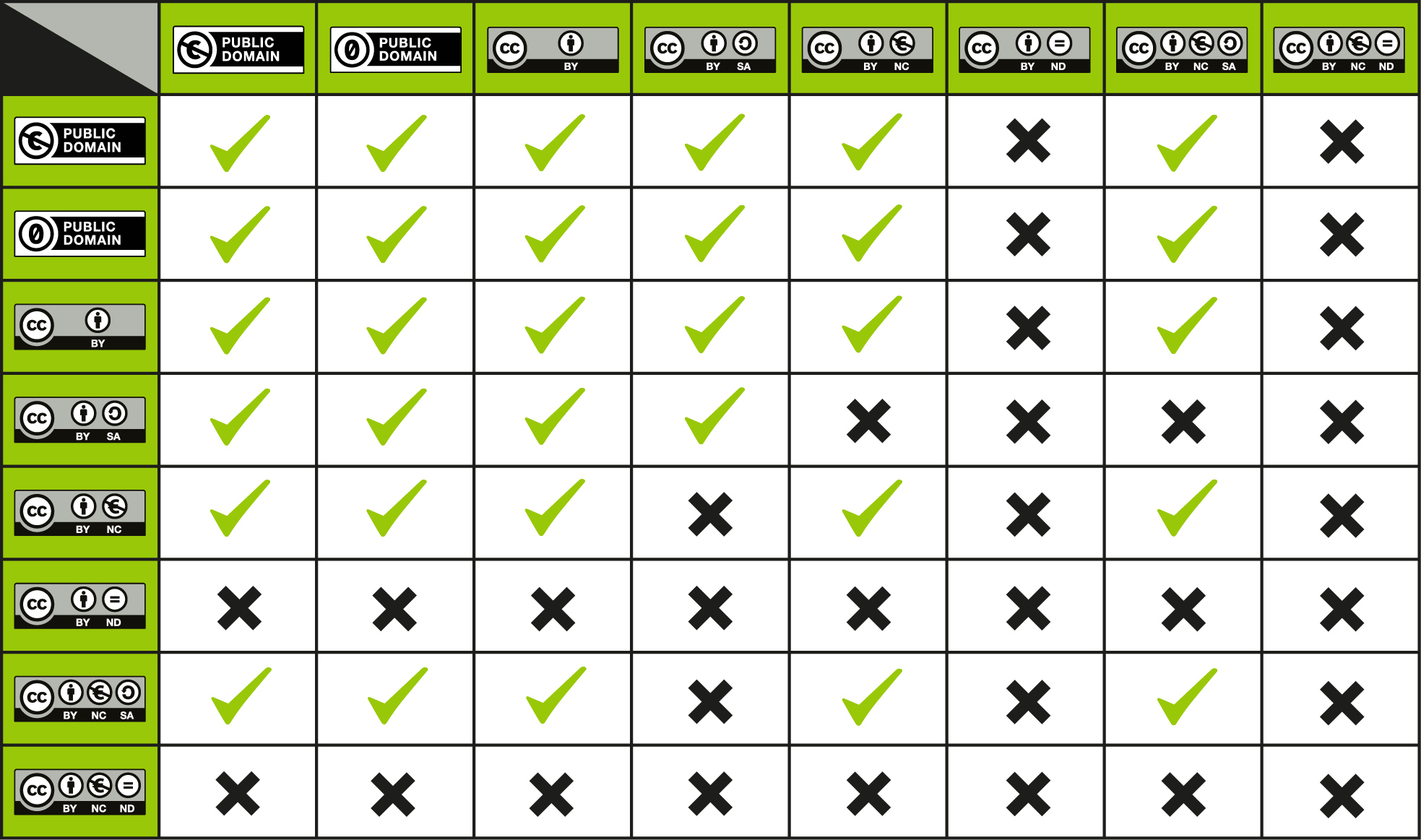Licensing and Terms of Use
If the only reference about the licensing terms in the source we’re checking is a “All rights reserved”, or the copyright symbol, then we need to ask for permission to the author to reuse, modify or distribute any part of it. However, the author may have written or referred to a copyright license that his/her work may fall under, and such license will explain us how we can use the work in terms of reusing, distribution and modification.
It’s impossible not to mention here Creative Commons, a collection of public copyright licenses that enable the free distribution of copyrighted work. Most of the open resources are licensed under Creative Commons, as their licenses (and the ability to remix their licenses to obtain the one that suits us most) cover most of the copyright restriction for the works that fall into public domain.
The rights managed by the CC licenses are:
| Attribution (BY)
|
You may copy, distribute, display, perform and make derivative works only if you credit the original author.You get a math book under CC and you decide to update the chapter about integrals with better examples. You need to credit the original author of the book. |
|
Share-alike (SA)
|
You may distribute derivative works only under a license identical to the license of the original work. You cannot relicense it with more restrictions.The updated math book needs to have the same license than the original (or one with the same restrictions). |
|
Non-commercial (NC)
|
You may copy, distribute, display, perform and make derivative works, but you cannot profit on it.
You cannot sell the new math book, nor charge anyone for using, distributing or modifying it. |
|
No Derivative (ND)
|
You may copy, distribute, display and perform, but you cannot modify it.
The maths book will have to keep the original chapters. |
Should we License Our Content with an Open License?
It is up to you how much you want to participate in the community. There are many open educational resources (OER) available (like the content of this guide, for example), and you have to take into account something very important: if you share, you may take, but if you don’t share then you can’t take much. That is how open licenses work most of the time.
You can look at how compatible are the licenses in the following table[1]:

[1] Creative Commons: Can I combine material under different Creative Commons licenses in my work?: https://creativecommons.org/faq/#can-i-combine-material-under-different-creative-commons-licenses-in-my-work

